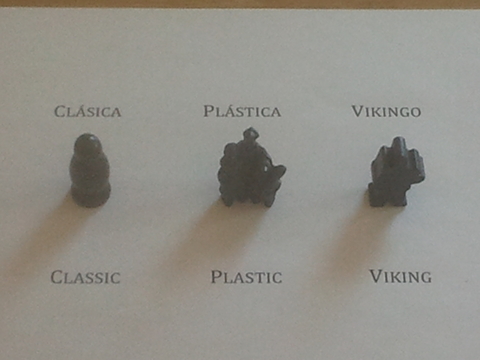
El Ladrón
Cuando sale un siete, despierta el Ladrón. Este ladrón es autónomo y listo: va donde hay lo más a robar! Para ver donde va, tira los dados otra vez. Si sale otro siete, el ladrón vuelve a su casa (desierto). Si no, va al hexágono del número tirado con lo más de producción (pueblos = 1, ciudades = 2). En caso de empate, dos pueblos cuentan más de una ciudad y dos colores valen más. Si aun hay empate, el ladrón va al hexágono del jugador con turno más temprano.
Nadie roba ningúna carta, pero se aplica el límite de cartas en mano: el dado más grande del siete: 4, 5, o 6.
A veces jugamos con dos ladrones, o con un ladrón y un pirata - depende del tablero. En estes casos, el dado más pequeño determina cuales se despiertan. Por ejemplo, si hay dos ladrones, el gris mueve con 1, el negro con 2, y los dos con 3.

The Robber
When a seven is rolled, the Robber awakens. This robber is autonomous and clever: he goes where there's the most to rob! To see where, roll the dice again. If you roll another seven, he goes home (desert). If not, he goes to the hexagon of the rolled number with the most production (villages = 1, cities = 2). In case of a tie, two villages count more than a city, and two colors count more than one. If there's still a tie, the robber blocks the hex of the player with the soonest turn.
Nobody robs any cards, but with any seven, the limit of cards in hand applies: the larger of the two dice (4, 5, or 6).
We sometimes play with two robbers, or one robber and a pirate - it depends on the map. In those cases, which ones awakens on seven depends on the lesser of the two dice. For example, if there are two robbers, the gray one moves on 1, the black one on 2, and both on 3.

